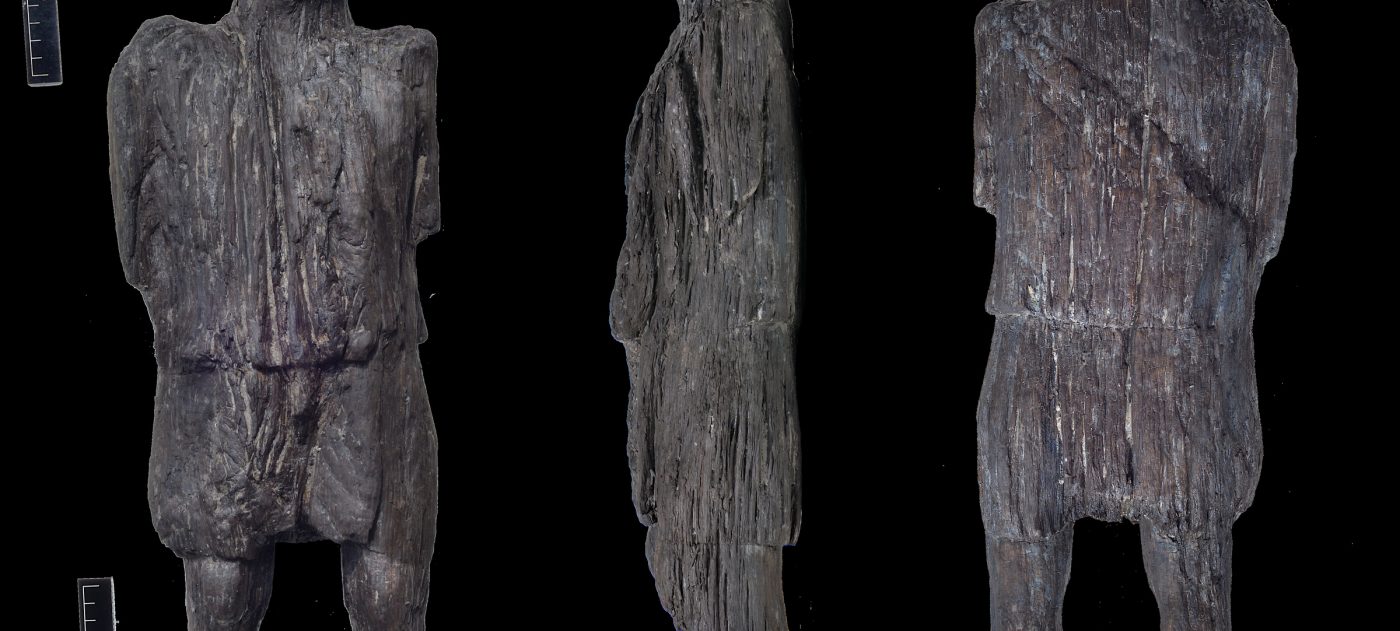
Three Bridge Mill
Archaeologists working on the HS2 project in Twyford, Buckinghamshire, have discovered a very rare early Roman anthropomorphic or humanlike wooden carved figure in a field in Buckinghamshire.
Uncovering the site
As a team of archaeologists were investigating at Three Bridge Mill, the team came across what they initially thought was a degraded piece of wood from a water-logged ditch. As they continued to excavate it a humanlike, or anthropomorphic, figure was revealed. The figure, cut from a single piece of wood, stands at 67cm tall and is 18cm wide.
Initial assessment dates the wooden figure to the early Roman period, given the style of the carving and the tunic-like clothing. Shards of pottery dating from 43-70 AD were also discovered in the same ditch. Whilst archaeologists cannot be certain about what the carved figure was used for, there have been examples of wooden carved images being offered as gifts to the gods. It is possible that rather than being casually discarded in the ditch it was more deliberately placed there.
Given its predicted age and being carved from wood, what is most surprising is the incredible preservation of the artefact. The lack of oxygen in the water-logged clay fill of the ditch has helped prevent the wood from rotting, thus preserving it for centuries.
Whilst the figure is in good condition given its age, the arms below the elbows and feet have degraded. A surprising amount of detail remains visible in the carving with the figure’s hat or hairstyle clearly noticeable. The head is slightly rotated to the left, the tunic at the front seems to be gathered at the waist going down to above knee level, and the legs and shape of the calf muscles are well defined.
The figure is currently being preserved by York Archaeology’s conservation team at their specialist laboratory where it will undergo examination and conservation. A small fragment from the figure, found broken off in the ditch, is being sent for radiocarbon dating to provide an accurate date for the wood, and stable isotope analysis is being undertaken, which may indicate where the wood originally came from.
The occurrence of carved, wooden, figures in British prehistory and the Romano-British period is extremely rare. In 2019 a wooden limb, thought to be a Roman votive offering, was found at the bottom of a well in Northampton. Examples of full Roman carved figures have been recovered in Dijon and Chamalières in France. A wooden carving, the ‘Dagenham Idol’, was recovered from the north bank of the Thames in 1922 and has been dated back to the Neolithic period and an early Iron Age carved figure was recovered from the banks of the River Teign, Kingsteignton in 1866.